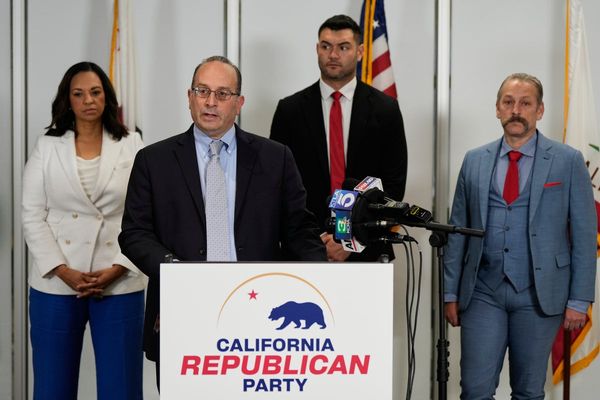Across the country, the teacher shortage crisis is reshaping classrooms in ways parents never imagined. Schools are struggling to fill vacancies, class sizes are swelling, and students are feeling the effects through inconsistent instruction and limited support. The problem isn’t just about numbers—it’s about the long-term quality of education and the future of learning. Understanding how this crisis impacts your child’s education helps families advocate for solutions and prepare for the changing educational landscape.
Larger Class Sizes and Less Individual Attention
One of the most visible effects of the teacher shortage crisis is the rise in class sizes. With fewer qualified teachers available, schools combine classes or ask educators to take on more students than they can effectively manage. This shift reduces the amount of one-on-one attention students receive, making it harder for teachers to identify learning gaps or behavioral issues early on. As a result, high-achieving students may stagnate, while struggling learners fall further behind. The learning environment becomes more about survival than personalized instruction.
Increased Reliance on Substitute and Unqualified Teachers
In districts hit hardest by the teacher shortage, schools are hiring substitute or uncertified teachers to fill permanent roles. While many of these individuals are well-intentioned, they often lack the specialized training needed to manage classrooms or adapt curriculum for diverse learners. This creates inconsistency in instruction and can disrupt the rhythm of learning. Students may experience frequent turnover in instructors, leaving them confused or disengaged. Over time, the quality of education suffers as continuity and expertise disappear from the classroom.
Burnout and Early Departures from the Profession
The teacher shortage crisis is not just about recruitment—it’s also about retention. Veteran teachers are leaving the profession due to burnout, low pay, and increasing administrative demands. When experienced educators leave, schools lose mentors, institutional knowledge, and stability. Younger teachers are often thrust into leadership roles before they’re ready, adding more pressure to an already strained system. This cycle of stress and turnover perpetuates the crisis, creating an unstable learning environment that directly affects your child’s academic experience.
Decline in Extracurricular and Enrichment Programs
Another ripple effect of the teacher shortage crisis is the decline of extracurricular and enrichment opportunities. Schools facing staffing shortages often reassign teachers who once led art, music, or after-school programs to core subjects instead. These activities, which are vital for creativity, confidence, and social development, are among the first to be cut. Without them, students miss out on experiences that shape critical thinking and collaboration skills. The result is a narrower, less dynamic education that limits students’ personal growth.
Impact on Special Education and Support Services
Special education has been disproportionately affected by the teacher shortage. Qualified special education teachers and aides are increasingly difficult to find, leading to higher caseloads and fewer resources for students with disabilities. Many families report longer wait times for evaluations and reduced access to individualized instruction. This not only violates educational mandates but also places tremendous emotional strain on children who need consistent, specialized attention. The lack of support can hinder academic progress and widen achievement gaps.
Unequal Effects Across Districts
While the teacher shortage crisis is national, it doesn’t impact every community equally. Wealthier districts are often able to offer higher salaries or incentives to attract talent, while underfunded schools—especially in rural or urban areas—struggle to compete. This creates an uneven playing field where a child’s ZIP code determines their educational quality. Students in lower-income areas may face a revolving door of teachers, outdated materials, and overburdened staff. The result is a widening gap in educational equity that has long-term economic and social implications.
Parents and Communities Are Stepping In
In response to the teacher shortage crisis, many parents and community organizations are stepping in to support schools. Volunteers assist with tutoring, classroom activities, and extracurricular programs. Local businesses are sponsoring supplies or offering incentives for educators. These efforts make a difference but are not sustainable solutions to a systemic issue. Long-term change will require investment in teacher training, fair compensation, and policies that value educators as professionals. Still, parental involvement remains one of the strongest tools for maintaining educational stability during the crisis.
The Long-Term Costs of Inaction
Failing to address the teacher shortage has long-term consequences for students and society. Academic achievement declines when instructional quality drops, and the effects can persist into adulthood. Lower graduation rates, diminished workforce readiness, and reduced civic engagement all trace back to weakened educational foundations. Economically, communities may face slower growth as fewer graduates qualify for skilled positions. The cost of inaction is not just measured in dollars but in lost potential and opportunity for future generations.
What Parents Can Do to Advocate for Change
Parents play a powerful role in addressing the teacher shortage crisis. Start by staying informed about your district’s staffing challenges and attending school board meetings. Advocate for competitive teacher salaries, funding for support staff, and programs that encourage young educators to enter the field. Support teachers directly by volunteering, providing supplies, or simply expressing appreciation for their work. Collective community voices can influence local and state policies that prioritize education funding and teacher well-being.
Protecting the Future of Learning
The teacher shortage crisis is a wake-up call about the fragility of the education system. Every parent wants their child to learn in a safe, engaging, and well-supported environment—but that depends on having dedicated educators in every classroom. By recognizing the signs of strain and advocating for long-term investment in teachers, families can help restore balance and quality in public education. The future of learning depends not only on teachers but also on the collective commitment of communities that value education as the foundation of opportunity.
How has your local school been affected by the teacher shortage crisis? Share your experiences or solutions in the comments below.
What to Read Next…
7 Things Teachers Wish Parents Would Stop Believing
10 Parent Habits That Teachers Say Are Making Kids Rude
11 Parent Email Mistakes That Infuriate Teachers
Do Teachers Secretly Flag Families Who Question Curriculum?
Here’s What to Do When The Teacher Calls About Your Child’s Behavior
The post The Teacher Shortage Crisis: How It’s Affecting Your Child’s Education appeared first on Kids Ain't Cheap.








